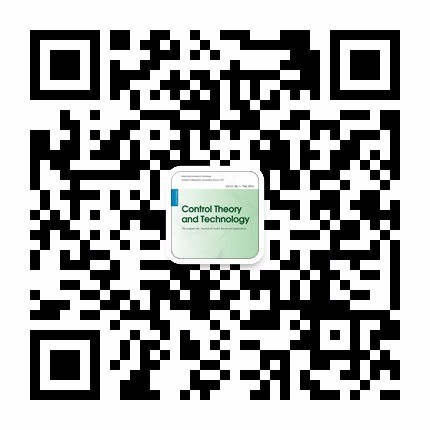| 摘要: |
| Considering that the inevitable disturbances and coupled constraints pose an ongoing challenge to distributed control algorithms, this paper proposes a distributed robust model predictive control (MPC) algorithm for a multi-agent system with additive external disturbances and obstacle and collision avoidance constraints. In particular, all the agents are allowed to solve optimization problems simultaneously at each time step to obtain their control inputs, and the obstacle and collision avoidance are accomplished in the context of full-dimensional controlled objects and obstacles. To achieve the collision avoidance between agents in the distributed framework, an assumed state trajectory is introduced for each agent which is transmitted to its neighbors to construct the polyhedral over-approximations of it. Then the polyhedral over-approximations of the agent and the obstacles are used to smoothly reformulate the original nonconvex obstacle and collision avoidance constraints. And a compatibility constraint is designed to restrict the deviation between the predicted and assumed trajectories. Moreover, recursive feasibility of each local MPC optimization problem with all these constraints derived and input-to-state stability of the closed-loop system can be ensured through a sufficient condition on controller parameters. Finally, simulations with four agents and two obstacles demonstrate the efficiency of the proposed algorithm. |
| 关键词: Distributed model predictive control · Robust control · Multi-agent system · Obstacle and collision avoidance · Convex optimization |
| DOI:https://doi.org/10.1007/s11768-022-00079-x |
|
| 基金项目:This work was supported in part by the National Natural Science Foundation of China (Nos. 62173036, 62003040, 62122014), and in part by the Beijing Institute of Technology Research Fund Program for Young Scholars. |
|
| Distributed robust MPC for nonholonomic robots with obstacle and collision avoidance |
| Li Dai1,Yanye Hao2,Huahui Xie1,Zhongqi Sun1,3,Yuanqing Xia1 |
| (1 Beijing Institute of Technology;2 Xi'an Aeronautics Computing Technique Research Institute;1 Zhejiang University of Technology·3 Yangtze Delta Region Academy of Beijing Institute of Technology) |
| Abstract: |
| Considering that the inevitable disturbances and coupled constraints pose an ongoing challenge to distributed control algorithms, this paper proposes a distributed robust model predictive control (MPC) algorithm for a multi-agent system with additive external disturbances and obstacle and collision avoidance constraints. In particular, all the agents are allowed to solve optimization problems simultaneously at each time step to obtain their control inputs, and the obstacle and collision avoidance are accomplished in the context of full-dimensional controlled objects and obstacles. To achieve the collision avoidance between agents in the distributed framework, an assumed state trajectory is introduced for each agent which is transmitted to its neighbors to construct the polyhedral over-approximations of it. Then the polyhedral over-approximations of the agent and the obstacles are used to smoothly reformulate the original nonconvex obstacle and collision avoidance constraints. And a compatibility constraint is designed to restrict the deviation between the predicted and assumed trajectories. Moreover, recursive feasibility of each local MPC optimization problem with all these constraints derived and input-to-state stability of the closed-loop system can be ensured through a sufficient condition on controller parameters. Finally, simulations with four agents and two obstacles demonstrate the efficiency of the proposed algorithm. |
| Key words: Distributed model predictive control · Robust control · Multi-agent system · Obstacle and collision avoidance · Convex optimization |

